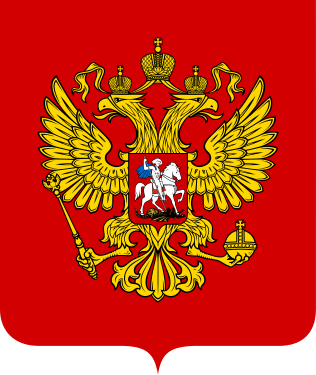Cherkess
Cherkess (or Cherkes; /tʃərˈkɛs/; Russian: Черкесы, romanized: Cherkesy; Adyghe: Чэркэс/Шэрджэс, romanized: Čerkes/Šerdžes) is a term derived from the Russian-language name for the Circassians, a people of the North Caucasus.[2] While the term was traditionally applied to all Circassians before Soviet times, it has since usually referred only to the Circassians living in northern Karachay-Cherkessia,[2] a federal subject of Russia, where they are indigenous and formed just under 12% of the population in 2010.[3] These Circassians are mostly Besleney Kabardians who speak a variety of the Cherkess, i.e. Circassian, language.[4] They also inhabit the villages of Khodz, Blechepsin, Koshekhabl and Ulyap in nearby Adygea.
Адыгэ | |
|---|---|
| Total population | |
| 49,591 people (In Karachay-Cherkessia) | |
| Regions with significant populations | |
| 73,184[1] | |
| Languages | |
| Cherkess (Kabardian) Russian | |
| Religion | |
| Sunni Islam | |
| Related ethnic groups | |
| Other Circassians | |
The Cherkess generally call themselves Adyge (Адыгэ), as do most Circassians.[2] The name of the Cherkess was given to Cherkessk, formerly called Batalpashinskaya, the capital of Karachay-Cherkessia.
History
The Russians referred to all Circassian tribes as Cherkesy, which may be derived from Kerkety, the name of one of the Adyghe tribes native to the northwestern Caucasus.[5] The Turkic peoples referred to the Circassians as Cherkas, a name which had come into common use by the 13th century.[5] This designation (Cherkas) originally "did not designate the Adygei but rather the people living in southern Ukraine".[5] Even in contemporary times, Ukraine has a province named Cherkessk, with its provincial capital bearing the same name.[5]
With the advent of the Golden Horde in the 13th century, the designation Cherkess "came to refer to the Adygei who remained in the Caucasus, and then became a generic term for all who lived there".[5] This in turn created terminology "anomalies", and as a result, Cherkes became often used alongside other names such as Adygei, Abaza, Kabardian, Karachay, and Abkhaz.[5] In Medieval Oriental and European texts, "the Adygei people were known by the name Cherkess/Circassians".[5]
The Encyclopaedia Islamica adds: "This is because the Cherkess, the Kabardians and the Adygei people share a common language, which is spoken by the north-western Caucasian (Abkhazi) people, and belongs to the family known as Abkhazian-Adygei".[5] In Persian sources, Charkas/Cherkes is used to refer to the "actual" Circassians of the northwest Caucasus, and in some occasions as a general designation for Caucasians who live beyond Derbent (Darband).[6]
Modern times
The Cherkess (in the modern, narrow sense) migrated from Kabarda between 1780 and 1825, settling in the upper Zelenchuks and Urup valleys, from which they were largely displaced during the period of the 1830–1850s. During the 19th century, due to pressure from the Russia, many Cherkess moved to the Middle Eastern countries, where they largely assimilated, while still living there as a distinguishable minority. Most Cherkess have converted to Islam.
The political history of the Cherkess since the Russian Revolutions of 1917 is complex. A Karachay-Cherkess Autonomous Oblast was created in 1922. It was split into Karachay Autonomous Oblast and Cherkess National Okrug in 1926, but was incorporated back into the Karachay-Cherkess Autonomous Oblast in its former borders in 1957 following the rehabilitation of the Karachay.
On 3 July 1991, the autonomous oblast was elevated to the status of the Autonomous Soviet Socialist Republic of Karachay-Cherkessia (under the jurisdiction of the Russian SFSR), and on 9 December 1992, the words "Autonomous Soviet Socialist" was dropped from the name and it became the Karachay-Cherkess Republic.[7]
See also
References
- Russian Census 2010: Population by ethnicity Archived April 24, 2012, at the Wayback Machine (in Russian)
- James Stuart Olson, et al., eds. "Cherkess".An Ethnohistorical Dictionary of the Russian and Soviet Empires. Greenwood Publishing, 1994. p. 150. ISBN 9780313274978 "The Beslenei (Beslenej) are located between the upper Urup and Khozdya rivers, and along the Middle Laba River, in the western reaches of the North Caucasus."
- http://www.gks.ru/free_doc/new_site/perepis2010/perepis_itogi1612.htm (in Russian)
- Всероссийская перепись 2010, Итоги, Т. 4. — Табл. 1. Национальный состав населения (скачать: ).
- Reza, Hirtenstein & Gholami.
- Manz & Haneda 1990, pp. 816–819.
- Закон РФ от 9 декабря 1992 г. N 4061-I «Об изменениях и дополнениях Конституции (Основного Закона) Российской Федерации — России» (принят седьмым Съездом народных депутатов РФ) (in Russian)
